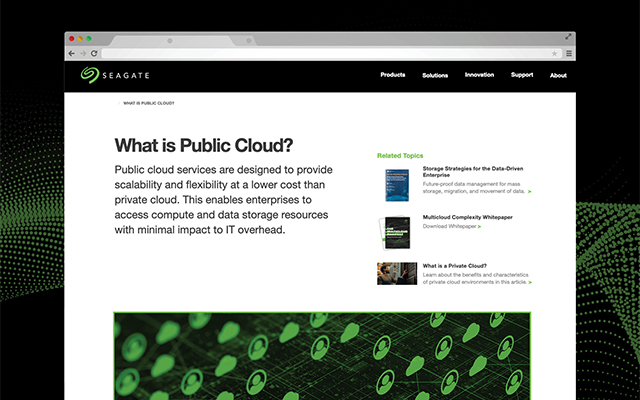Public cloud is a category of IT services platforms in which third-party providers deliver computing resources, data storage, applications, and/or services to multiple enterprises or individuals via the public internet. Public cloud infrastructure is shared by multiple users, companies, and clients in contrast to private cloud, in which resources are dedicated to one organization. Public cloud services are used by companies that need access to scalable compute or data storage resources and that want to reduce or eliminate costs for on-premises IT architecture and services.
Purpose of Public Cloud
Companies use public cloud services to deliver computing resources such as applications, data storage, or virtual machines. Public cloud services can help companies host workflows, store data, or develop and deploy applications.
The public cloud helps companies by enabling them to quickly and temporarily scale operations that require more computing power, shared resources, or data storage capacity without investing in hardware, software, and data-center space. When utilized efficiently, public cloud services can potentially provide lower IT overhead costs for certain needs when compared to on-premises IT infrastructure.
Public cloud services shift the responsibility for maintenance, security, and other technical support to the third-party cloud service provider. Instead of managing all their own IT systems with on-premises solutions, client companies can rely on public cloud services to manage, maintain, and upgrade the system architecture. Public cloud services do not necessarily replace a company's in-house IT footprint nor IT personnel, but they can supplement internal teams with additional computing power and resources.
Public clouds are designed to provide scalability and flexibility. Companies can use public cloud to quickly increase their usage of data and resources as the company's needs change or as the company grows.
Public Cloud Benefits
Public cloud services provide companies with benefits that include:
- Lower initial setup and maintenance costs than private cloud. Installing a data center or a private cloud with on-premises systems typically requires substantial upfront costs, as well as ongoing maintenance. By contrast, public cloud services offer pay-per-usage subscription models so companies can access cloud resources and pay for only what they need.
- Infinite scalability that’s always available. On-premises data centers can be limited in terms of size, scope of resources, and availability of IT personnel. Public cloud enables companies to grow without facing increasing costs to further build out and equip on-premises data centers.
- Security managed by third-party providers. Public cloud service providers are responsible for managing data security for their customers. Public cloud security standards are typically robust and reliable, and many companies can manage their data security needs effectively with public cloud providers.
Public Cloud Use Cases
There are several different ways to use public cloud services, depending on each organization's business goals. Some categories of cloud computing, such as Software as a Service (SaaS), Infrastructure as a Service (IaaS), and Platform as a Service (PaaS) can be deployed via the public cloud.
- IaaS: This can reduce or eliminate the cost of managing and maintaining onsite IT infrastructure. IaaS frameworks are priced on a subscription model, so the client organization can get just the right level of access to technology resources with the possibility of scaling up as the company grows.
- PaaS: PaaS provides access to a ready-to-use cloud-based platform for deploying applications. PaaS frameworks can help companies develop and deploy applications faster than they might have been able to achieve with on-premises/private cloud platforms.
- SaaS: SaaS applications can be hosted on public cloud services. Companies using the application do not have to pay for the cost of software setup and maintenance, and the software is available on a subscription basis.
- Storage as a Service (STaaS): Storing business data in the public cloud may make it easier to access, retrieve, and secure files—without the need for maintaining an onsite network. There are a variety of service models for STaaS and several factors to consider between them, such as varying levels of cost per data unit, greater or lesser flexibility and control over data ingress and egress, or the level of simplicity in integrating with and moving data to and from other cloud services as part of a multicloud strategy.
- Data Backup and Disaster Recovery: In the event of a catastrophic failure, natural disaster, or other data loss onsite, a cloud backup will facilitate disaster recovery. Using public cloud services for data backup and disaster recovery can potentially expedite restoration of operations.
- Development and Testing: Organizations can use public cloud as a virtual environment to test and develop new applications. The cloud can enable the creation of multiple customizable environments to help get projects completed faster.
The public cloud provides various options for flexible, scalable access to computing services and resources. Companies can use public cloud services to align their technology strategies with the right level of support, security, and access to computing resources. Organizations that want flexibility, scalability, and potential cost savings often benefit from public cloud services.












